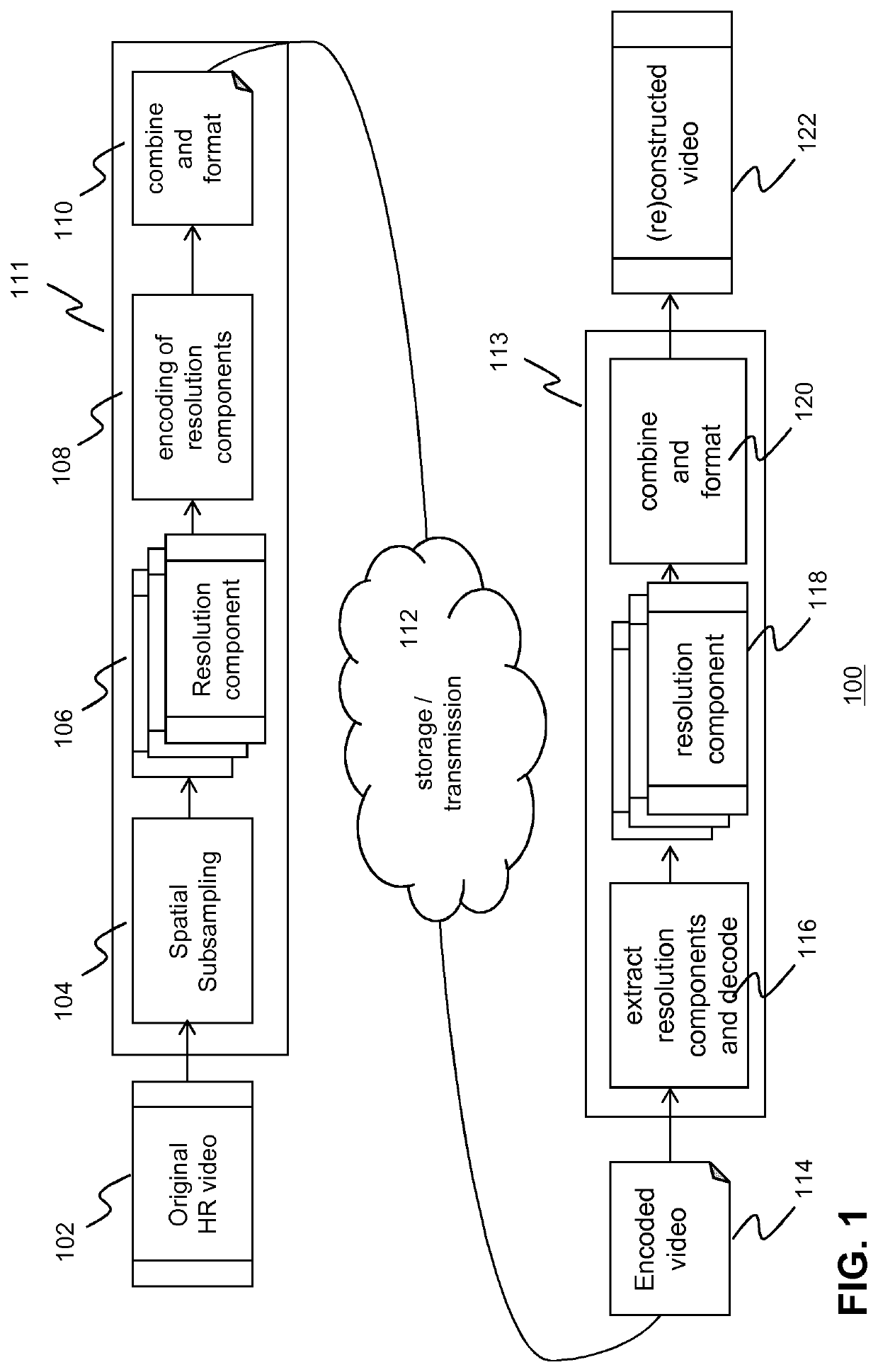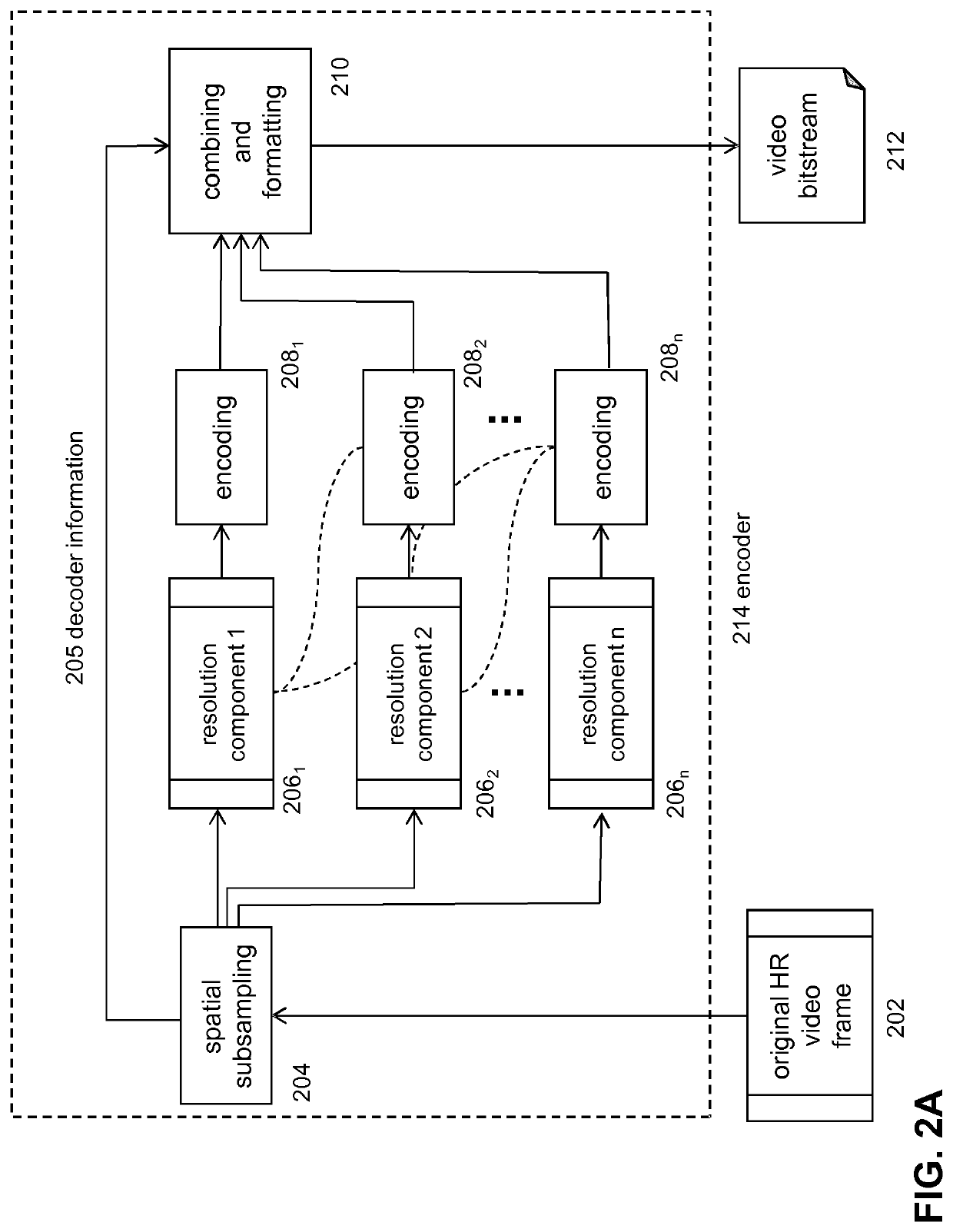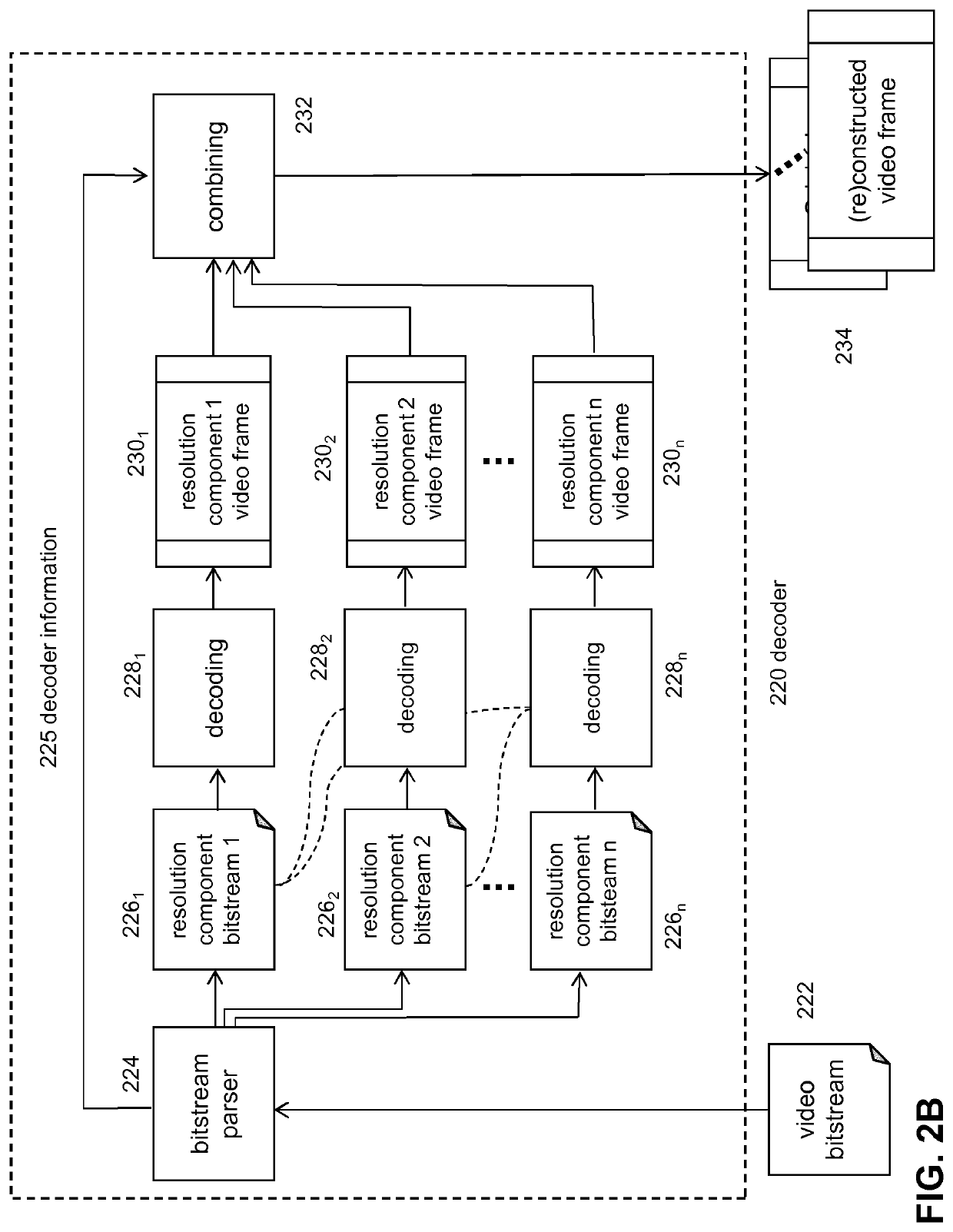Spatial Scalable Video Coding
a video coding and spatial scaling technology, applied in the field of spatial scaling video coding, can solve the problems of high memory consumption, high implementation complexity of multi-loop video coding design such as shvc, and delays when a user is present, so as to reduce artefacts, increase compression efficiency, and fast processing
- Summary
- Abstract
- Description
- Claims
- Application Information
AI Technical Summary
Benefits of technology
Problems solved by technology
Method used
Image
Examples
Embodiment Construction
[0075]FIG. 1 depicts a schematic of the coding system according to an embodiment of the invention. In particular, FIG. 1 depicts a coding system comprising an encoding device 111 and an associated decoding device 113. The encoding device may be implemented as a network encoder configured to receive multiple LR video signals of the same or substantially the same scene. In an embodiment, the multiple LR video signals (LR descriptions) may be generated on the basis of a HR video signal 102. For example, in an embodiment, a spatial subsampling technique 104, such as a polyphase subsampling technique, may be used in order to generate multiple LR descriptions 106 on the basis of the HR video signal. Each of the LR descriptions may then be encoded into multiple encoded LR descriptions.
[0076]The LR descriptions may be encoded on the basis of a predetermined coding standard, e.g. AVC, HEVC, VP9, etc. Further, at least one of the LR descriptions is encoded such that it can be independently de...
PUM
 Login to View More
Login to View More Abstract
Description
Claims
Application Information
 Login to View More
Login to View More - R&D
- Intellectual Property
- Life Sciences
- Materials
- Tech Scout
- Unparalleled Data Quality
- Higher Quality Content
- 60% Fewer Hallucinations
Browse by: Latest US Patents, China's latest patents, Technical Efficacy Thesaurus, Application Domain, Technology Topic, Popular Technical Reports.
© 2025 PatSnap. All rights reserved.Legal|Privacy policy|Modern Slavery Act Transparency Statement|Sitemap|About US| Contact US: help@patsnap.com



